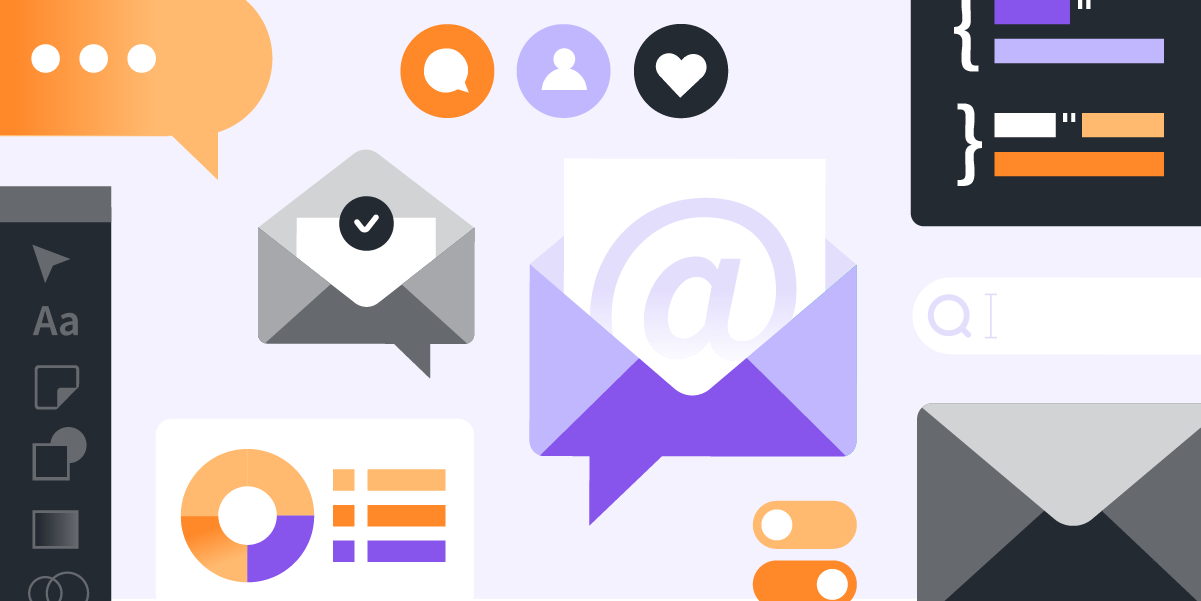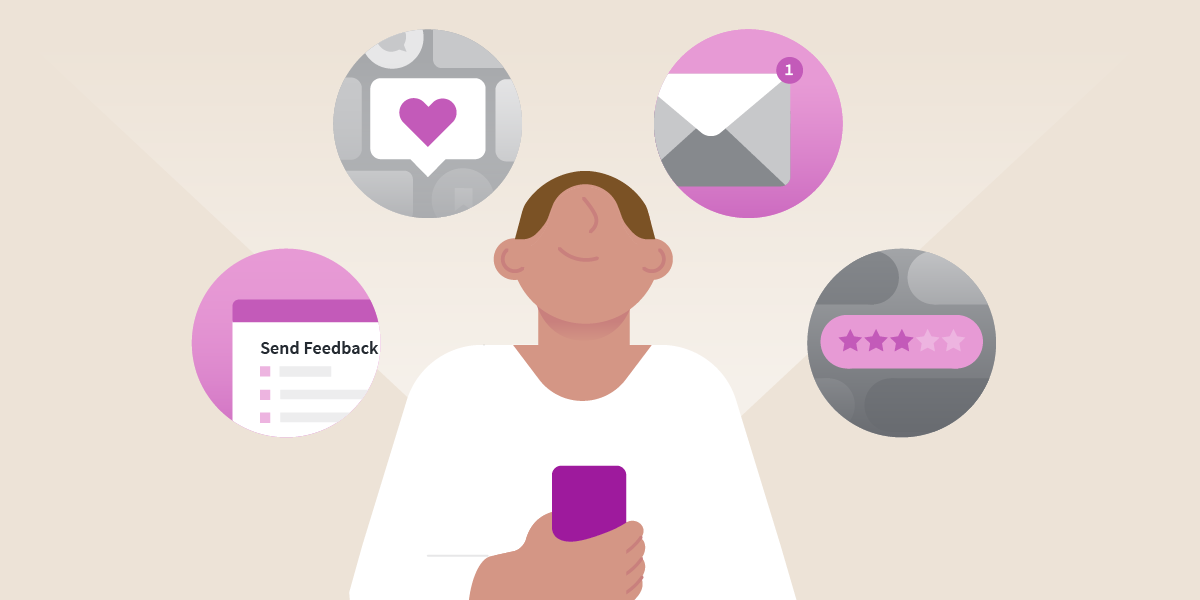In today’s digital landscape, technology can help you grow brand awareness, boost sales, and enhance customer loyalty. There’s a whole array of tools, platforms, and tech that play a pivotal role in building a brand’s identity, creating digital advertising campaigns that drive results, and facilitating positive customer experiences.
Read on to learn what martech is, common types of martech, the differences between adtech and martech, and how to get started with martech.
What Is Martech?
Marketing technology, or “martech,” is a term that refers to the array of platforms, tools, and technologies that businesses can use to automate, streamline, and optimize their marketing efforts. The goal of martech is to simplify the work of marketers by making marketing processes more efficient and flexible.
What Is a Martech Stack?
A martech stack is when multiple marketing technologies are used together to help a business reach its goals.
For example, one organization may leverage a customer relationship management (CRM) platform, a social media management platform, and a demand-side platform (DSP). Together, these platforms enable the organization to manage their customer base and prospects, schedule social media posts, and run programmatic advertising.
A Brief History of Martech
Over the last few decades, martech has seen significant milestones. In the 1980s, database marketing systems emerged, allowing for the storage of customer information.
As we moved into the 1990s, customer relationship management (CRM) systems evolved beyond just data storage, and started to become capable of tracking customer interactions.
The 2000s brought the proliferation of social media platforms like Facebook and Twitter, which meant new opportunities to connect with audiences through digital marketing. This gave rise to technologies for managing and analyzing social media data.
By the 2010s, customers began to expect seamless experiences across their devices, but a fragmented marketing landscape meant this was a challenge for marketers. This demand for cohesive experiences led to the development of more advanced martech solutions.
And in the 2020s, martech has experienced substantial industry growth. Between 2019 and 2020 alone, the availability of marketing technology tools grew worldwide by 25.5%.
8 Types of Martech
Martech includes various platforms that enable marketers to gather valuable data, streamline processes, and influence customer experiences and buying behaviours. There’s a broad range of types of martech, but let’s dive into 8 of the most common categories of martech in a marketer’s stack.
1. Analytics
Analytical tools are a type of martech that help you to measure the impact of your marketing efforts. This is done by supplying data such as 1st-party data. With analytics technology, you can enhance the precision of your ad targeting, create a retargeting strategy, optimize your website, and gather valuable insights about your customers.
2. Advertising
Digital ad technology (adtech) describes the platforms and software that are available to deliver and measure digital advertising campaigns to ideal audiences. With the buying and selling of digital ads becoming more complex, adtech has made it possible to streamline the process. For example, DSPs are platforms that enable advertisers to buy media placements and select audiences across many publisher sites.
3. Customer Relationship Management (CRM)
CRM technology helps you build stronger relationships with existing customers by tracking communications, processes, payments, and orders, all in one place. This streamlines service delivery, boosts sales to individual customers, personalizes messaging, and helps to increase customer retention.
4. Email Marketing
Email marketing platforms and tools can help you simplify the launch and optimization of your email marketing campaigns. These martech solutions typically offer automation for email sequences, templates for email creation, and management of customer email addresses and preferences. You’re able to do comprehensive analysis, including A/B testing, monthly reports, and integration with push notifications and social media.
5. Search Engine Optimization (SEO)
SEO martech solutions help you optimize your organic search strategy, which can potentially boost your products and websites’ visibility in search engine results. SEO tools and platforms analyze industry-relevant keywords’ performance, provide data on keyphrases, ranking, and competition, and assist in creating targeted content to increase your web traffic.
6. Customer Experience Software
This type of martech enables you to maximize marketing effectiveness by testing website, interface, and application efficiency. Many customer experience applications offer A/B testing and personalization features for various website visitors.
7. Content Management and Creation
Content management tools are meant to support you in handling your marketing and website content, making it easier to search, update, tag, create, review, and edit content. With a content management system (CMS), you can easily build and optimize web pages, landing pages, blogs, and more.
Alongside a CMS, content creation platforms are another useful type of martech. These are tools designed to support graphic design, video and audio production, video marketing, and podcast distribution.
8. Social Media and Management
This includes marketing technology that streamlines posting, responding, and managing social media accounts by automating tasks like cross-posting content to various platforms, scheduling posts, and resizing images. Some social media tools offer content creation prompts tailored to customer preferences and profiling systems to understand followers’ interactions with the brand.
Adtech Vs. Martech: What’s the Difference?
Adtech and martech fall under the same umbrella. Martech (short for marketing technology) refers to platforms, tools, and technologies that businesses can use to support their marketing efforts.
Adtech is short for “advertising technology.” It describes the technology that is used for managing advertisements across channels, and to reach a desired audience that is measurable and optimizable. Basically, adtech is a subset of martech, which more broadly describes technology related to marketing.
The key difference between adtech and martech is the target audience, and what stage of the marketing funnel they are in. Adtech can be used for brand awareness and demand generation, and martech can be leveraged to manage customer relationships and help build loyalty.
In today’s digital marketing landscape, the key to success is to leverage adtech and other martech tools together to optimize your funnel, streamline your processes, and ultimately drive desired results.
How to Use Adtech and Martech Together
There’s several benefits to leveraging adtech and broader martech tools together. Integrating these technologies can help you build seamless campaign execution processes, integrate your data, and create centralized customer profiles. The goal? Create a closed loop system for reporting and optimization.
Get Started With Martech
If you’re already using adtech, you are likely familiar with the benefits of leveraging martech tools. If adtech and martech are new to you, it’s time to get started!
Running programmatic ads is a great way to start benefiting from a digital marketing workflow that leverages technology to maximize results. Investing in programmatic advertising will help you work more efficiently, gather important data, streamline your processes, and ultimately– achieve your marketing goals or objectives.
FAQ
Adtech is a type of martech. The main difference between the two is the target audience, and what stage of the marketing funnel they are in. Adtech is usually used for brand awareness and demand generation, and martech is typically leveraged to manage customer relationships and help build loyalty.
A demand-side platform (DSP) is an example of martech because it is a digital platform that is designed to enhance and streamline various aspects of digital advertising and marketing. A DSP supports programmatic advertising, which falls into a marketer’s broader digital strategy.
A demand-side platform (DSP) is an example of martech because it is a digital platform that is designed to enhance and streamline various aspects of digital advertising and marketing. A DSP supports programmatic advertising, which falls into a marketer’s broader digital strategy.
Want to run exceptional programmatic campaigns? Request a demo to learn more about StackAdapt.





